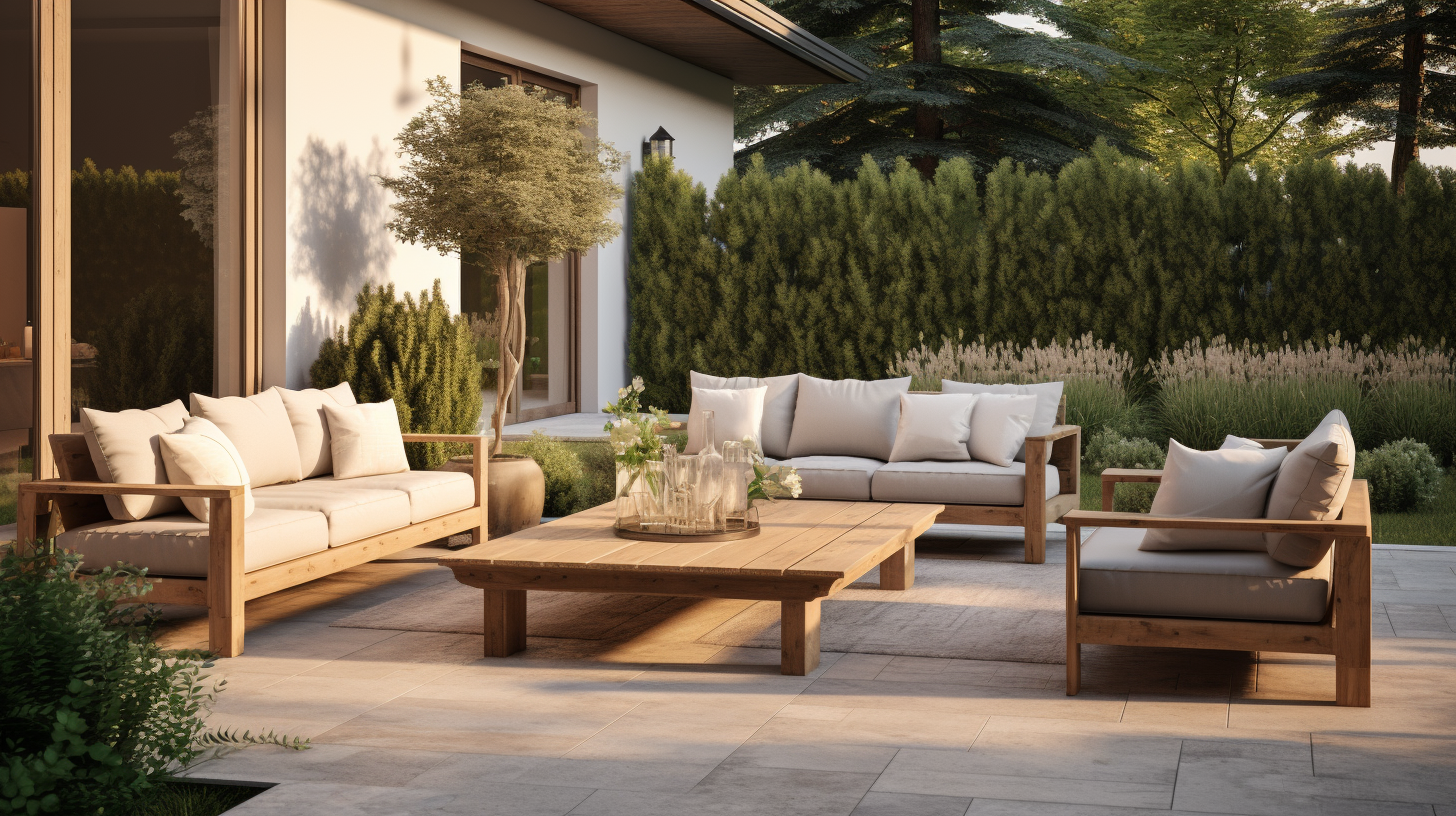Learn how to waterproof wood for outdoor furniture to withstand what Mother Nature throws at it. This comprehensive guide includes the best ways to protect wood outdoor furniture, the best waterproof wood sealers, and even a step-by-step guide for how to refinish outdoor furniture.
The great outdoors can be rather unpredictable. Fluctuating temperatures, harsh UV rays, heavy rain, and creepy crawlers can all take a heavy toll on outdoor furnishings and stained decks.
Untreated lumber is susceptible to warping, cracking, and rotting when left exposed to the elements. Much like our own skin, sunlight ages wood before its time whereas water attacks wood with fungal growth. Basically, this material can’t catch a break.
TYPES OF OUTDOOR WOOD SEALERS
A chemical water sealant preserves the natural look of the timber without covering the grain like paint does. Sealing is essentially a waterproofing method that protects the furniture from moisture and rain but also adds a small amount of UV protection (in some cases).
There are three types of sealants:
- Polyurethane sealant. Usually for painted surfaces.
- Urethane. These can be oil or water based and used with stains. Read your product label.
- Hardening Oils. These include Teak or Tung Oil. I do not recommend linseed, danish, or other oils for longevity.
WHAT TO LOOK FOR IN A SEALER?
The best sealer for your project depends on what you desire in a sealer. No maintenance? Environmentally friendly? Clear? While this list isn’t exhaustive, I’ve tried many different sealers, finishes, and topcoats. I wouldn’t say that any particular product is bad, but it’s key to align your expectations with what each product is designed to do.
Wood exposed to weather elements will ALWAYS CHANGE COLOR. A sealer that has no UV protection isn’t going to keep wood looking bright and fresh. Period. It’s the sun’s ultraviolet rays that cause wood to turn grey by breaking down the lignin and cellulose structure.
Penetrating vs Topcoat. This is my personal opinion, but I’ve come to the conclusion that penetrating is a marketing term that varies broadly between brands. First, how deeply it penetrates varies vastly and it’s usually only a few cells deep. Also, penetrating products may or may not provide any abrasion resistance. So on a surface like a deck, the top layer wears off fairly quickly.
Ambering or Yellowing. The majority of oil-based or oil modified sealers will yellow over time. This may or may not be what you want. For example, with a darker natural wood stain, this yellowing will remain unnoticed and may even keep the wood looking a bit brighter. However, with a grey stain, you may want to find something that won’t amber over time.









